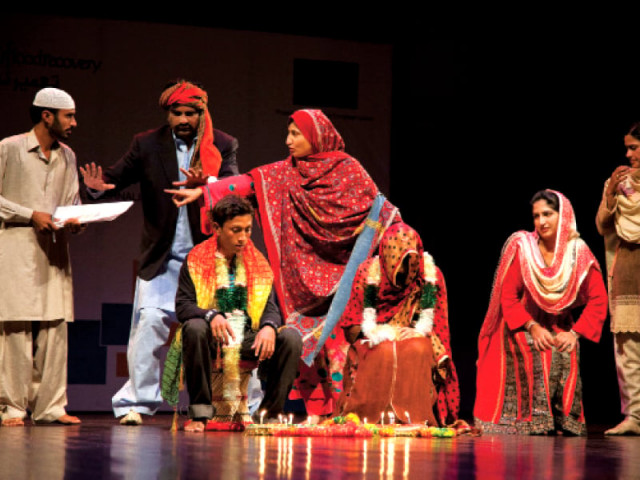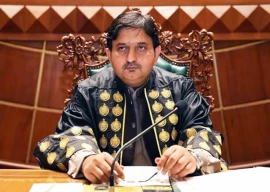
To celebrate the success of a capacity building project, the European Union (EU) organised an event at the Pakistan National Council of the Arts on Wednesday.
Aimed to improve accountability and assistance in the post-2010 flood recovery period, the “Media for Early Flood Recovery” (Tameer-e-Nau) project focused on community needs through the eyes of the media.
The event featured a photography exhibition, showcasing visuals of communities in Layyah as they struggled to build back the affected communities. There were also some profile shots of the individuals who went from being ordinary citizens to social activists.
The chief guest on the occasion, the Ambassador and Head of the European Union Delegation Lars-Gunnar Wigemark noted that unless journalists highlight their communities’ issues, they cannot become responsible journalists, adding effective journalism begins at grassroots.


A documentary presentation titled “Connecting the Dots” showcased five individuals who became active in mobilising the community for their sustainability. Two rural theatre groups “Sochla Theatre” and “Roshan Theatre” performed two plays, enacting the societal issues prevalent on Layyah.
The EU collaborated with Internews Europe to implement the project, targeting 15 flood affected districts. Over 300 journalists, community groups, government officials and local NGOs were trained under the project, which resulted in the formation of the National Council of Environmental Journalism. The project worked with community leaders, local NGOs, district and local governments as well as print media in flood-affected areas to mobilise the community to speak out for their rights.

Thomas Baerthlein, who initiated the project, said it was exciting to work on such an innovative project. “We really were able to build bridges between the media, the people and the government - with surprisingly concrete results: Roads were built and schools reopened just because of this project.”

Community Liaison Manager Waseem Ejaz explained, “through interactive theatre performances, we reached to the most vulnerable population; empowered them to raise collective voice and take concrete actions towards eliminating poverty, social injustice and gender discrimination”. The programme also improved the capacity of national and regional television networks to engage with and report on grassroots governance issues in flood-affected areas.
“Training and mentoring has helped journalists tell their stories much more effectively, from how stories are planned to how they are produced,” said TV Resident Journalism Advisor Michael Alexander.
Published in The Express Tribune, December 20th, 2012.

















COMMENTS
Comments are moderated and generally will be posted if they are on-topic and not abusive.
For more information, please see our Comments FAQ